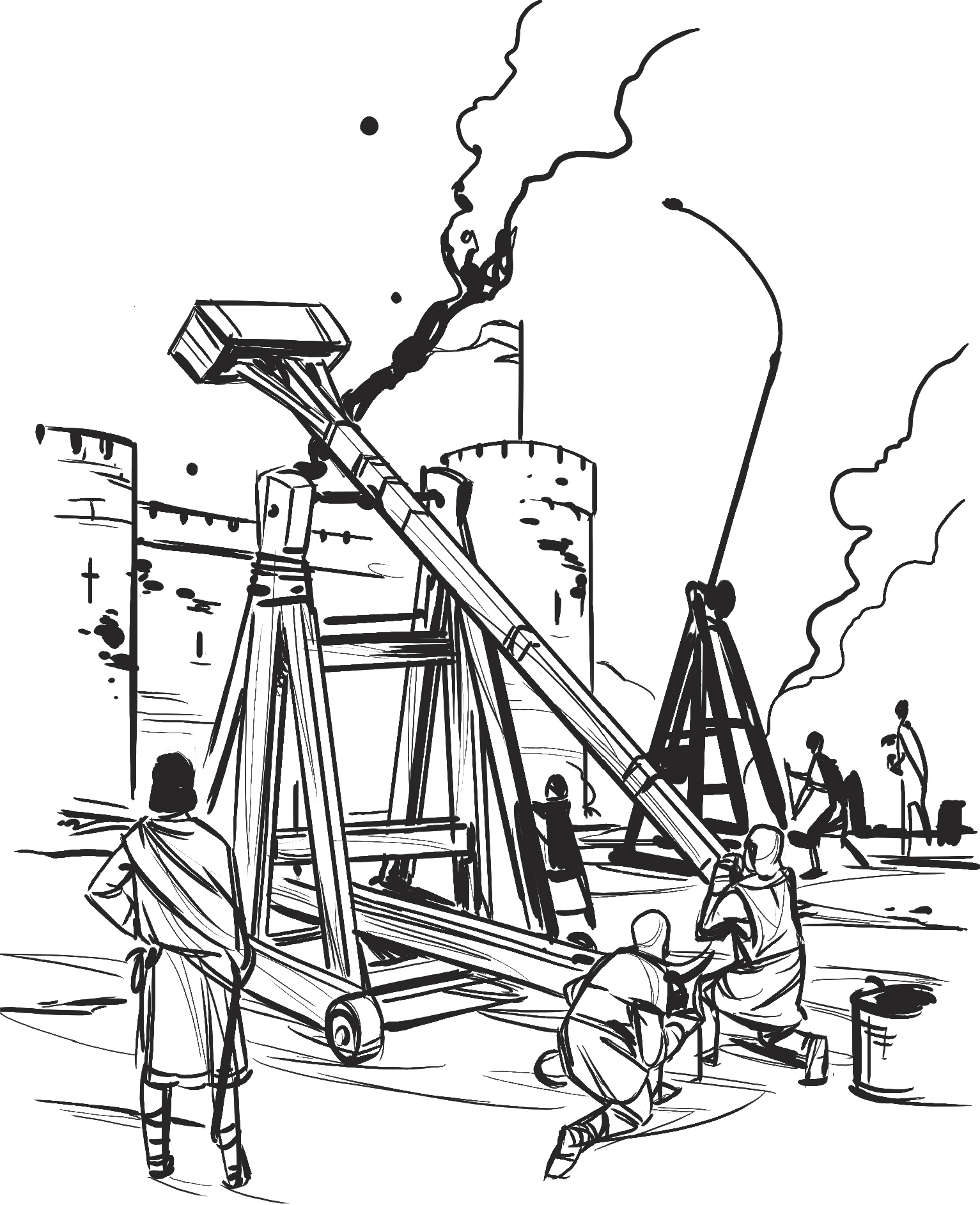CHAPTER 4
Besieged!

King Henry III
Sometimes the Tower had to protect the king from his own subjects. For most of his reign, King Henry III was fighting a war against the powerful lords who owned land in England. In 1267, a group of lords surrounded the Tower of London. Using catapults, they tried to break through the thick walls. But they were beaten back.
Many of the fighters who helped the king win this battle were Jewish. The church didn’t allow Christians to lend money for interest. So only Jewish people could lend money. The kings of England often needed to borrow money. So they let Jewish moneylenders live in the area around the Tower.

Soldiers firing stones from a catapult at the Tower
Over the years, a large Jewish community grew up there. They were under the protection of the Constable of the Tower. When they were threatened, the Jews would go into the Tower, where they would be safe. So when the rebel lords’ army attacked, these Jews fled to the Tower. There they bravely helped with the defense.
In 1290, King Edward I kicked all the Jews out of England. But the road near the Tower where they lived is still called Old Jewry.

Old Jewry Road, present day
In 1380, the government needed extra money because of the cost of fighting a long war known as the Hundred Years’ War. So the new king, Richard II, declared a new tax. Everyone over fifteen years old in the kingdom had to pay one shilling. This was not much for a rich man. But for a poor worker, it was a full month’s wages.
The peasants were already poor and starving. They had had enough. Headed by a leader named Wat Tyler, an army of more than twenty thousand peasants marched on London. Another army of almost seventy thousand, led by Jack Straw, marched on London from another direction.

King Richard II was only fourteen years old. He went into the Tower to be safe. The peasant army raged through London. They burned and destroyed the palaces of government officials. They killed anyone who looked rich or powerful. But the Tower of London was too strong for them. They couldn’t break in.
King Richard said he would meet with the peasant army outside London.
He bravely rode out of the Tower on his horse to the meeting place they had agreed on. But when the guards tried to close the Tower gates after the king had left, four hundred peasants were able to storm in. For the first time in its history, the Tower of London had an enemy army inside its walls.

In the Tower, the peasants found four of the government officials they hated most. They were hiding in the chapel. The peasants dragged them outside and cut their heads off on Tower Hill. These were the first executions to take place at the Tower of London. They would not be the last.

Meanwhile, Richard was talking peacefully with the peasant army. He promised he would give them anything reasonable that they asked for. But on the way back, he heard about what had happened in the Tower. Now he was angry. He arranged to meet with the peasant leaders again. This time, fighting broke out and Wat Tyler was killed.

With their leader dead, the peasant army was ready to return home. They thought that Richard would keep his promise to them. But Richard said his promise didn’t count because he had been forced to make it. He didn’t keep it. The Peasants’ Revolt didn’t really change anything.

Henry IV
Years later, in 1399, Richard II returned to the Tower for a very different reason. When he grew up, he was a weak and flawed king. The throne was taken away from him by Henry IV. Henry put Richard in prison in the Tower. While Richard was locked up, Henry forced him to agree to give up his claim to be king.
Order of the Bath
